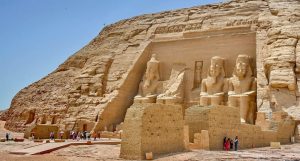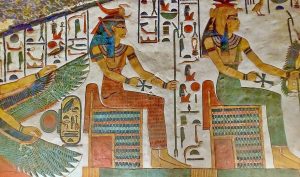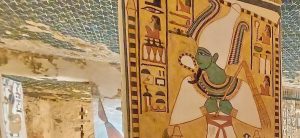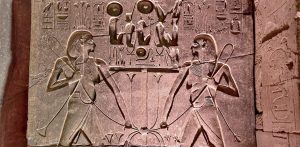Djed Pillar of God Osiris: Symbol of Stability and Resurrection
In the ancient Egyptian pantheon, Osiris, the god of the afterlife, held a significant role in the beliefs and rituals surrounding death and rebirth. Central to his symbolism was the Djed pillar, a sacred symbol representing stability, strength, and resurrection. This article explores the profound significance of the Djed pillar in the mythology and religious practices of ancient Egypt.
The Symbolism of the Djed Pillar:
The Djed pillar, also known as the “backbone of Osiris,” was a vertical column resembling a tree trunk with four horizontal bars near the top. Its appearance evoked the image of a sturdy support structure, symbolizing the stability and endurance of the god Osiris. The Djed pillar was believed to represent the spine of Osiris, a crucial element in his resurrection and eternal life.
Resurrection and Rejuvenation:
Osiris, as a central figure in Egyptian mythology, was associated with the cycle of life, death, and rebirth. His death at the hands of his brother Seth and subsequent resurrection represented the eternal cycle of nature. The Djed pillar played a vital role in this narrative, symbolizing the resurrection and rejuvenation of Osiris.
Reinforcing Stability and Order:
The Djed pillar also represented stability and order in the Egyptian cosmos. It was believed to support the heavens and maintain the balance and harmony of the world. The act of raising the Djed pillar during religious ceremonies was seen as a way to renew and reinforce the cosmic order, ensuring the continuity of life and protection against chaos.
Rituals and Worship:
The Djed pillar had a profound impact on religious rituals and ceremonies in ancient Egypt. During the annual festival of Osiris, known as the “Feast of the Cutting of the Djed,” the symbol was ritually “cut” and then “reconstructed” to symbolize the death and resurrection of Osiris. This symbolic act was meant to invoke the god’s power of regeneration and ensure fertility and abundance in the land.
The Djed Pillar in Art and Architecture:
The pillar’s significance extended beyond religious rituals and permeated various aspects of ancient Egyptian culture. It was a common motif in temple architecture, often incorporated into the design of columns and pillars. The symbol also appeared in amulets, jewelry, and tomb decorations, emphasizing its importance in both religious and personal contexts.

Legacy and Influence of the Djet Pillar:
The symbolism and association with Osiris continued to influence Egyptian culture throughout history. It became a symbol of stability, strength, and endurance, revered not only in religious contexts but also in daily life. The Djed pillar’s enduring legacy can be seen in its presence in ancient Egyptian art, hieroglyphs, and even its adoption by other deities and cultures.
The pillar of Osiris stands as a powerful symbol of stability, resurrection, and cosmic order in ancient Egyptian belief systems. Its association with Osiris and its role in the cycle of life and death made it an integral part of religious rituals and ceremonies. The Djed pillar’s enduring influence can still be felt today, reminding us of the ancient Egyptians’ deep reverence for the concepts of stability, strength, and eternal life.
Check these links:






